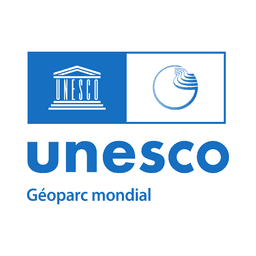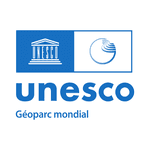The Provençal Colorado
"The ocher massif of Luberon is a geological and landscape curiosity not to be missed! Circling around the heart of the classified site of the Colorado of Rustrel, highly visited, is choosing to enjoy the site differently. Between colored views, sandy passages, mining operation remains and natural wealth, this stroll is a treat! ". says Anne-Camille Vinson - 2nd year of Master's intern at Réseau des Parcs de PACA.
14 points of interest
 Patrimony and history
Patrimony and historyOpération Grand Site Massif des Ocres
Classified site since 2002, the ochres of Apt are one of the largest deposits in the world. With a significant number of visitors and risks of degradation, the Massif des Ocres raises lots of questions. In 2010, working in tandem with local actors, an "Opération Grand Site" (sustainable Tourism project) was launched to implement a development project, good management and preservation of natural and landscape heritage but also cultural heritage in the hope of becoming a "Grand Site de France".
 Patrimony and history
Patrimony and historyRestoring the views on the Provençal Colorado
Since the end of the ochre processing, vegetation gradually invaded the Provençal Colorado. The colonisation of Scots pine (highly flammable) has become a landscape issue but also a safety one. Also in 2015, tree cuttings were done to recreate landscape openings and to find old quarry excavated faces. The goal was to reinstate the ochre in the site but also in the great landscape and safeguard the visitors by creating an assembly point.
 Geology
GeologyOchre formation
The ochre sands result from a deep chemical modification of green marine sands. About 100 million years ago, green sands emerged and were altered under a hot and humid climate which transformed into, amongst others, ochre sands. It is from these sands extracted in quarries that ochre is made. Warning, mountain biking in the heart of the Provençal Colorado in Rustrel is forbidden, as is the sampling of ochre sands in natural environment.
 Patrimony and history
Patrimony and historyOchre processing in Rustrel
The Provençal Colorado is an old ochre operating quarry which dates back to the 19th century. The distinctive feature of the extraction is the use of water which served for washing the excavated faces. The sands were then dissolved and rolled down the slopes to the settling ponds. The remains from working the ochre are still found today on the site as an aqueduct, a network of pipes, pumping machines, drying ponds ...
 Flora
FloraBanks and rainforests
Mainly located along the Doa, an alluvial forest of softwood (like th poplar) has settled in connection with the layer of the river. They play many biological roles, namely, maintaining the banks, the self-purification of water, a reservoir and an ecological corridor for many species. They are a breeding and feeding hub for many species of birds and insects.
 Flora
FloraThe laurel leaved Rockrose
The laurel leaved Rockrose (Cistus laurifolius) is an easily identifiable shrub with its large evergreen, lanceolate, and dark green leaves leaves, and beautiful white flowers in spring. You may even recognize them with your eyes closed since its light, sweet perfume spreads in its immediate environment. Strictly dependent on acid soils, it is rather localized in our region, but is fairly common in the ocher massif where it can be found on the borders and clearings of woodlands.
 Patrimony and history
Patrimony and historyOcher and operation
Below is the old mining area Barriès (private - guided tour only). From washing, then decanting in large basins, to drying, crushing, and baking, a large scale of natural pigment was made, with a variety of colors. Launched in the 18th century, the industrial process for making ochre pigment reaches its high point in the 1920s. Today, the Société des Ocres de France still operates a quarry in Gargas and produces 1200 tons of ochre per year.
 Fauna
FaunaProtected vultures
In the 80s, the cliffs just above Rustrel housed a famous couple of Egyptian vultures. Smaller than European vultures, this scavenger and detritivorous animal is also a long-haul flight expert! In 1998, thanks to tracking markers, school children were able to follow their migration to Sahelian Africa. The couple disappeared from our skies for a few years and their young descendants have not taken over. There are a hundred of couples in France.
 Geology
GeologySlabs with imprints
This exceptional site is a limestone slab which has on its surface over 200 footprints of mammals that lived in the area about 30 million years ago. Near a vast lake, rhinos have left three-toed footprints while the two-toed ones belong to mouse-deers or warthogs (related to the wild swine). The mammal footprint imprinted slabs are very rare throughout the world but 8 were profiled in the Luberon!
 Geology
GeologyPattern imprinted concrete from Viens
200m left, a limestone slab has on its surface more than 200 footprints of mammals that lived in the area about 30 million years ago. Near a vast lake, rhinos have left three-toed footprints while the two-toed ones belong to mouse-deers or warthogs (related to the wild swine). The mammal footprint imprinted concrete is very rare throughout the planet but 8 were described in the Luberon!
 Flora
FloraFlowering plants, the Luberon gem
Adonis, Cornflower, Love-in-a-mist... The Luberon is one of two regions of France richest in annual garden flowering plants, called "Harvest companions". Unfortunately, highly threatened in France, these plants depend completely on traditional farming for survival, as it is still done here by farmers that use little or no herbicides on their fields. The work of these farmers is essential for the preservation of a rich and fertile soil in the Luberon.
 Patrimony and history
Patrimony and historyMorenas, the avant-gardist
In the Provençal Colorado, Francis Morenas was the first one to mark hiking routes in 1953. True pioneer of the southern GR, often called a "fada" (an informal term used to say someone is a bit nuts, crazy) by the locals, with his billhook and his pickaxe, he prepared over 1500km of trails between Ventoux, Monts-de-Vaucluse and Luberon. Fascinated, he loved above all sharing his pleasure for the outdoors with others. Until his last breath, he continued to maintain his footsteps, which have now more or less disappeared.
 Water and rivers
Water and riversThe Dôa, the multicolored torrent
The torrent has its source in the town of Viens (5 km away, to the east) and flows into the Calavon, a sub-tributary of the Rhone via the Durance. Before going through the Provençal Colorado, the Dôa runs through valleys surrounded by hills and the foothills of the mountains of Vaucluse. During its course through Rustrel, when there are violent thunderstorms, the torrent charges ochreous muds and clay loam which give a yellow to orange color to its waters.
 Flora
FloraThey like ocher...
In a very limestone environment, the ocher massif of Luberon offers the vegetation a unique sandy substrate in which an outstanding procession of siliceous (growing on silica), acidophilous (growing on acid soil) and psammophilous (growing on sand) plants develops. At the heart of the maquis, lawns colonize small isolated clearings in which rare species took refuge, some of them being protected by law.
Description
Facing the Restreou Hostel, take the Route de Saint-Christol (D30) to the right. 100m further, turn right and go down the Boulevard du Colorado (D30a). 430m further, take the Chemin de Saint-Joseph to the right and follow it. At the stop sign, cross the D22 (be careful!) and continue across. At the crossroads "Cornet", turn left. Then follow the old car park of Colorado. In a curve (refreshment area), immerse to the right on the DFCI track. Cross the Dôa (ford) and go up the long track of Barriès (GR® markings).
1- At the sign-post ''Barriès'' turn left onto the pretty trail (slab). Reach an area of ruts and continue straight (GR®). Then take the paved road "Chemin de l'Ubac". At the junction, go right onto Route de Gignac.
2- At the mountain pass, take the left track for 500m and reach the imprinted slabs. Turn around and go back to point 2. Back again on the pass, follow the road to the left. At the crossroads "Pradenques" and "Ubac de Pradenques" continue straight. On top of the hill, turn onto the right track. 1km away, take a right back into the woods. After a break, continue left onto the lower trail (PR). Go along a large field and reach the crossroads ''Croix de Christol '' (sign-post).
3- Pass the gate and hurtle down the trail (PR). The stones give way to ocher; take the time to make a landscape stop. Down, spin slightly to the left along the clearing, fording the Dôa, past the sewage treatment plant and reach the hamlet of Istrane.
4- Turn right and take small road. Skip two curves, go along a house and at the next intersection on the corner of a farm, turn left. Go up the small road. Cross the D22 (be careful!) and continue across. Pass the school parking lots and reach the center of the village of Rustrel.
- Departure : Place du Marché (route d'Apt), Rustrel
- Arrival : Rustrel
- Towns crossed : Rustrel, Gignac, Caseneuve, and Viens
Forecast
Altimetric profile
Recommandations
The two fords on Dôa at the start and at the end of the walk can be difficult after a big storm or a long rainy period. Be vigilant and if in doubt do not continue!
Remember to bring water; no water spring on the way!
Information desks
Luberon UNESCO Global Geopark
60, place Jean Jaurès, 84400 Apt
House of the Luberon Regional Nature Park
60, place Jean Jaurès, 84400 Apt
In the heart the old town centre of Apt, the House of the Luberon Regional Nature Park welcomes you in a town house of the 18th century. The permanent exhibition of the geology museum has a rich collection of fossils evidencing the geological history of the Luberon.
On sale at the shop: books, maps, guidebooks, games, posters...
Open Monday to Friday from 8:30 am to 12:00 pm and from 1:30 pm to 6 pm (and on Saturday, depending on the program). Free admission.
OTI Pays d’Apt Luberon
788 avenue Victor Hugo, 84400 Apt
Du 1er avril au 30 septembre
Ouvert du lundi au samedi de 9h30 à 12h30 et de 14h à 18h.
Juillet et août : Ouvert dimanche et jours fériés de 9h30 à 12h30
Du 1er octobre au 31 mars
Ouvert du lundi au mardi et du jeudi au samedi de 9h30 à 12h30 et de 14h à 18h.
Fermé le mercredi, dimanche et jours fériés.
Access and parking
At 10km Northeast of Apt by the D22 and D3011.
Parking :
More information
Source

Report a problem or an error
If you have found an error on this page or if you have noticed any problems during your hike, please report them to us here:



